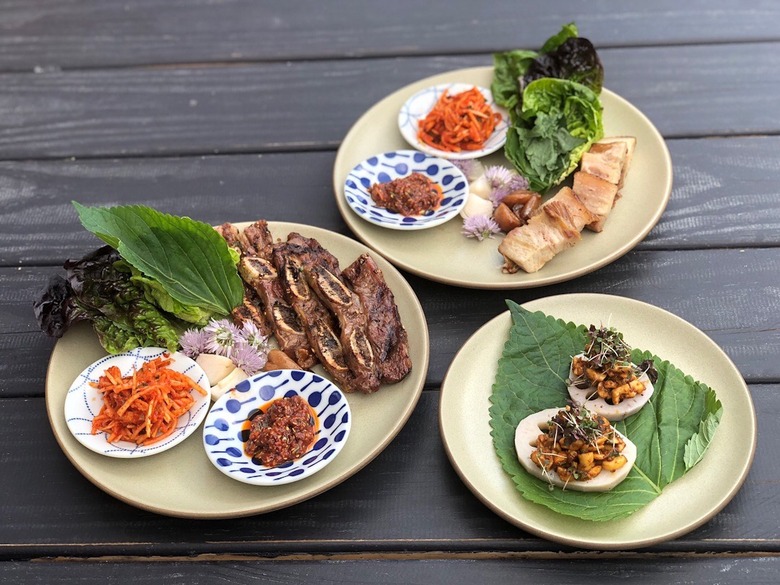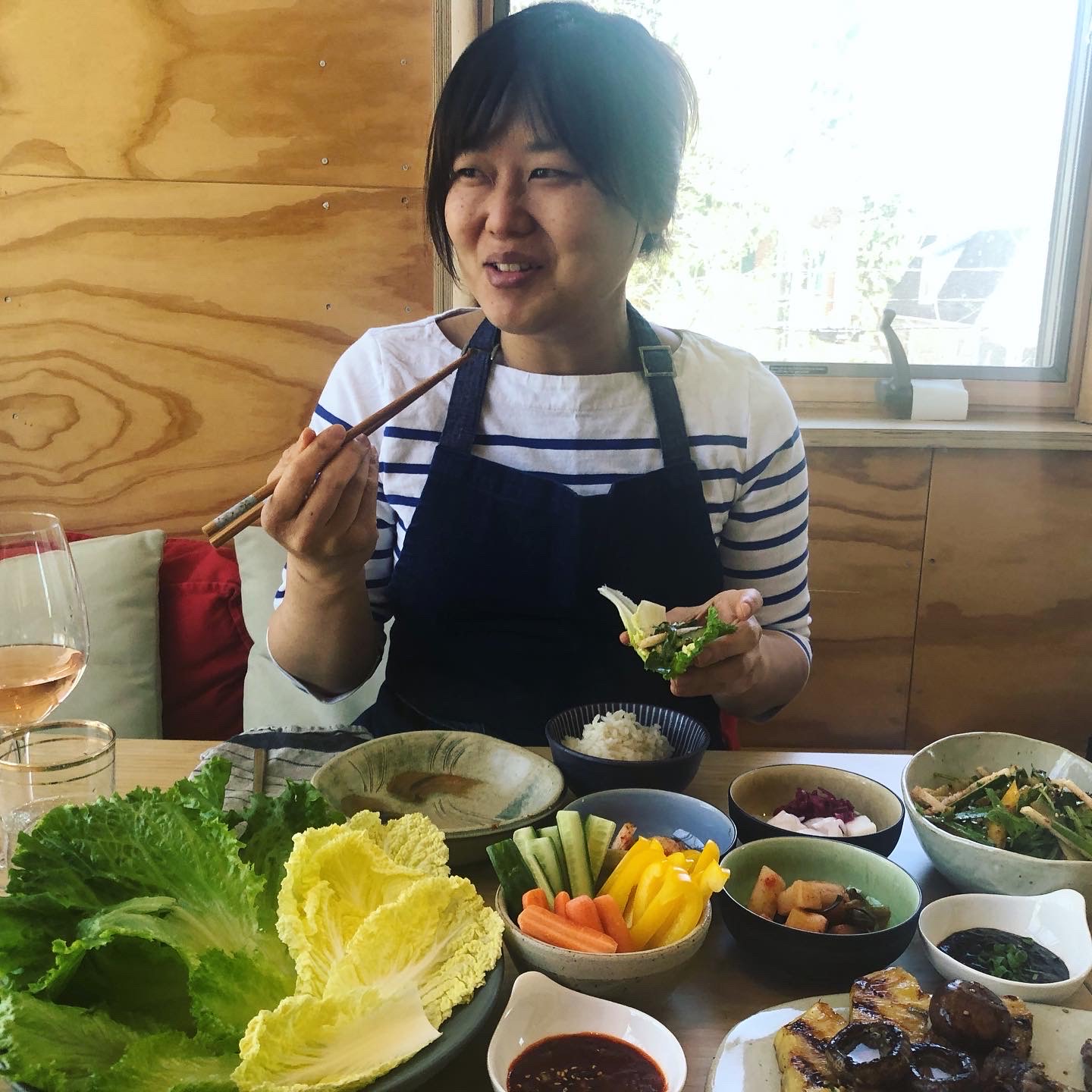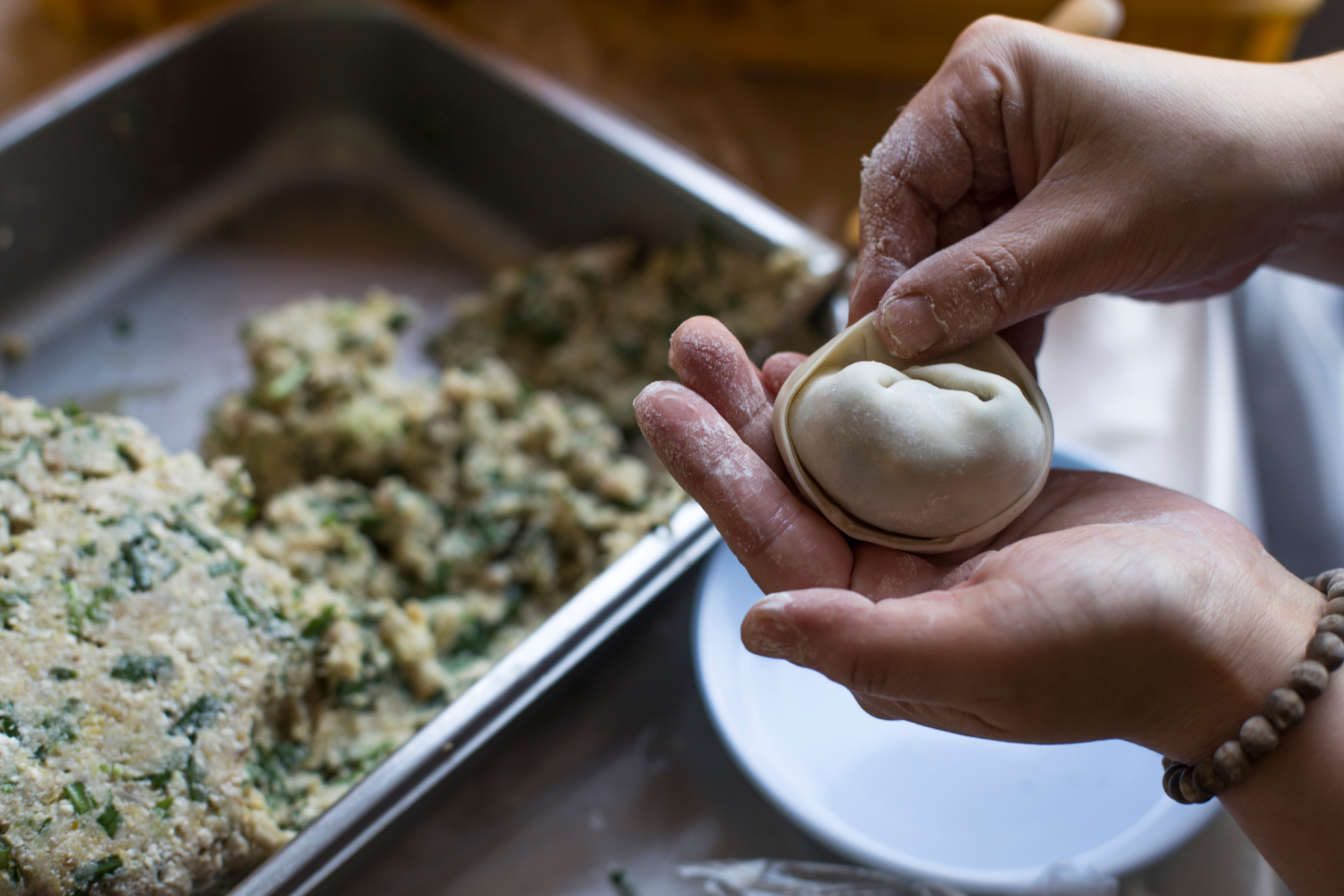Korean New Year Is All About The Food For Chef Ji Hye Kim
There are many traditional dishes eaten during Seollal, the Korean Lunar New Year: japchae (stir-fried sweet potato glass noodles), tteokguk (rice cake soup), bulgogi (barbecued beef), bibimbap (rice with meat and veggies). But for Ji Hye Kim, chef and owner of Miss Kim restaurant in Ann Arbor, Michigan, it's always been all about the dumplings. Lots of dumplings.
"Lunar New Year is about dumpling making," says Kim. "The whole family sitting around making dumplings and chatting."
When Kim was growing up in Seoul, South Korea, her mother was regarded as the best cook in the family. Yet the only times Kim was allowed into the kitchen to help were Lunar New Year and Chuseok, the harvest moon celebration similar to American Thanksgiving. That's because it was all hands on deck for the holidays. Even the men of the family, usually excluded from the cooking, were recruited to help out.
While the Lunar New Year is celebrated throughout Asia, each country has their own traditions. As one of the most important Korean holidays, Seollal is a multi-day celebration centered on family gatherings, ancestor worship, games and, of course, food.
Kim recalls how uncles, aunts and cousins would crowd into her family's small three-bedroom apartment for an entire weekend of dawn-to-dusk dumpling making, sitting on the floor around coffee tables forming dumpling after dumpling — called mandu in Korean — until every surface was covered. "If you were old enough to use your fingers, you were helping," recalls Kim. Her mom and aunts would disappear into the kitchen and come out with steamed dumplings for them to snack on while they continued mixing, rolling, filling and folding.
Kids and adults worked together, chatting and complimenting the prettiest dumplings or lovingly poking fun at the overstuffed ones. "I like the communal aspect of making the dumplings. There's no rush, but also don't slack off — if youre the slow guy, they'll point it out to you. You're relaxed and chatting — it's really fun," says Kim. "That is one of the fondest memories that I have."
The fillings for new year mandu were a serious affair — Kim says, with a chuckle, that her mom could be "snooty." For example, it's common to include potato noodles, but Kim's mother frowned upon it as a filler. She preferred firm tofu along with ground pork and beef, soy sauce, ginger and extra sour Napa cabbage kimchi.
Of course, dumplings aren't the only Lunar New Year staple in South Korea. Like most families, Kim grew up eating vegetable japchae, tteokguk and bulgogi or kalbi.
The other particularly special dish that Kim's mother made just on holidays and special festival days was a marinated grilled steak called nubiani. She says that the flavor profile is similar to bulgogi or kalbi but more complex and with a hint of sweetness from pear juice; it's a recipe that dates back further than kalbi or bulgogi, which are now fairly common in the U.S.
For Miss Kim's Nubiani Marinade recipe, click here.
Kim says that nubiani means short and flat, which refers to the cut of steak that is often used. But the nubiani marinade is so versatile that Kim likes to use it on everything from steak to ribs to chicken to tempeh.
This year, since in-person dining is complicated, Miss Kim — which is part of the Zingerman's community of businesses — will be offering a take-home meal kit to mark the new year. It will include marinated beef or tempeh, vegetables and pineapple to grill (or broil) alongside, mushroom japchae, purple rice and — of course — dumplings.


